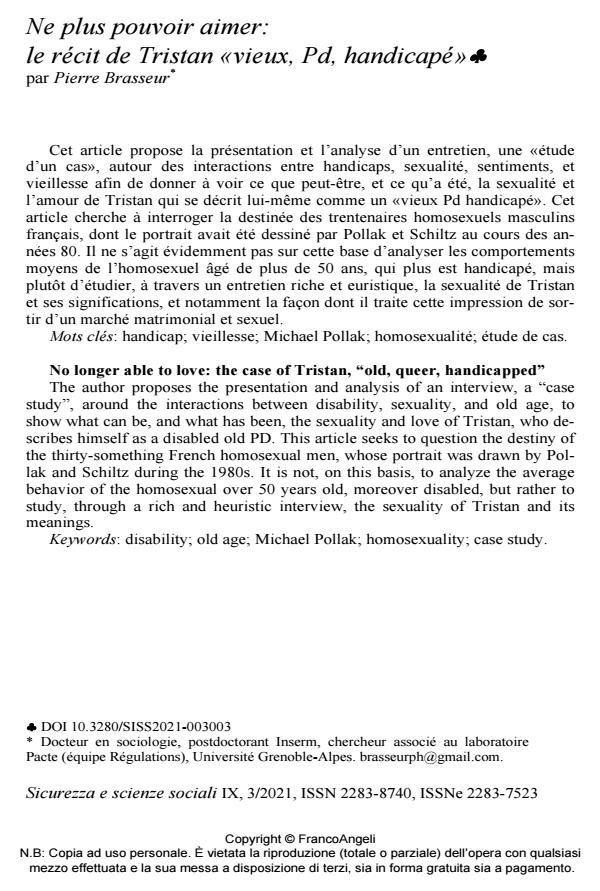No longer able to love: the case of Tristan, "old, queer, handicapped"
Journal title SICUREZZA E SCIENZE SOCIALI
Author/s Pierre Brasseur
Publishing Year 2022 Issue 2021/3
Language French Pages 32 P. 35-66 File size 261 KB
DOI 10.3280/SISS2021-003003
DOI is like a bar code for intellectual property: to have more infomation
click here
Below, you can see the article first page
If you want to buy this article in PDF format, you can do it, following the instructions to buy download credits

FrancoAngeli is member of Publishers International Linking Association, Inc (PILA), a not-for-profit association which run the CrossRef service enabling links to and from online scholarly content.
The author proposes the presentation and analysis of an interview, a "case study", around the interactions between disability, sexuality, and old age, to show what can be, and what has been, the sexuality and love of Tristan, who describes himself as a disabled old PD. This article seeks to question the destiny of the thirty-something French homosexual men, whose portrait was drawn by Pollak and Schiltz during the 1980s. It is not, on this basis, to analyze the average behavior of the homosexual over 50 years old, moreover disabled, but rather to study, through a rich and heuristic interview, the sexuality of Tristan and its meanings.
Keywords: disability; old age; Michael Pollak; homosexuality; case study.
Pierre Brasseur, Ne plus pouvoir aimer: le récit de Tristan «vieux, Pd, handicapé» in "SICUREZZA E SCIENZE SOCIALI" 3/2021, pp 35-66, DOI: 10.3280/SISS2021-003003